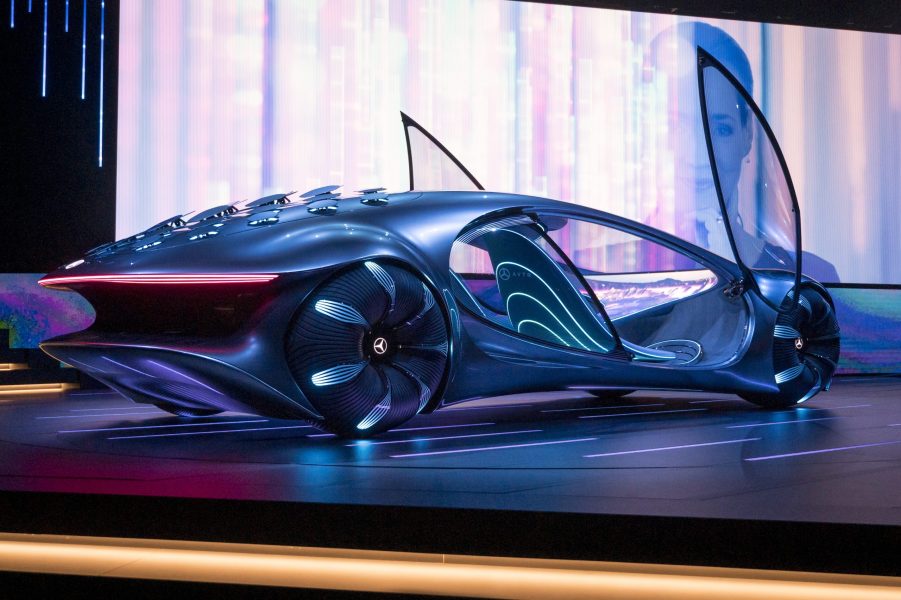
The Best 80s Concept Cars That Were Never Made
Concept cars allow automakers to test new technologies and influence the course of design trends. The 1980s produced some striking and forward-thinking concepts that never made it to production. Technology we take for granted was once an experimental showpiece.
Briggs & Stratton built a hybrid in 1980
Today the name Briggs & Stratton is synonymous with small engines typically used lawnmowers. However, in 1980, the brand branched out quickly and built a hybrid unlike anything previously seen. The 6-wheeled hatchback was built on the chassis and front suspension of the Ford Pinto, but the similarities stopped there.
This car was light years ahead of its time. It was powered by an 18 hp air-cooled twin-cylinder Briggs & Stratton engine and a 13 kW electric motor. Richard Petty pushed the small engine in this one-off concept car to an incredible 68 mph on a closed track.
A series of six 12v batteries were installed in the rear across the rear axle. This parallel hybrid could run on gas alone, on both motors simultaneously, or electric power. On a full charge, this hybrid had an electric-only range of approximately 50 miles.
The Corvette Indy looked like science fiction
The Corvette Indy, so named because it was designed or the Indy 500, is the Corvette that got away. This sleek and powerful machine demonstrated the engineering heights that GM could reach, but it never made it to the production floor. 2.65-L twin-turbo V8 pushed this striking car over 600 hp.
Then GM Design Vice President Chuck Jordan and staff GM designer Tom Peters carved the Corvette Indy’s body down to the sleek minimum leaving little room for a driver. A Lotus suspension, all-wheel-drive, all-wheel-steering, and traction control gripped the track as the Indy reached speeds up to 180 mph.
Touchscreens and digital displays are commonplace in vehicles today. In 1980 the Corvette Indy’s CRT display was revolutionary. The screen displayed GPS navigation, a technology that was not yet available to civilians. This cutting-edge technology, coupled with the striking exterior, gave the Indy a futuristic feel.
Oldsmobile’s futuristic world speed record-setter forged a path
The Oldsmobile Aerotech was single-mindedly built to be as aerodynamic as possible and produce the most speed on a straight stretch. Sources cite its top speed between 275 and 290 mph on a straight-away. Road and Track called the Aerotech a “spaceship for the road,” a fitting description.
Calling the Oldsmobile Aerotech a concept car doesn’t do it justice. This series is a living, evolving engineering lab. This five-year set out to push the limits of speed. On August 27, 1987, Indy 500 winner A.J. Foyt set a track record of 257.123 mph at the Fort Stockton Test Track. This powerhouse pulled 1,000 hp and ran the quarter-mile in 8 seconds.
These concepts pushed design and engineering envelopes. Each one added its influence to the future of the automotive industry. Concept cars make their way to the street in the cars that come after them. These concept cars preserve some pivotal moments in automotive history. The 1980s were a period of fascinating development that is perfectly represented with over-the-top concept cars.


